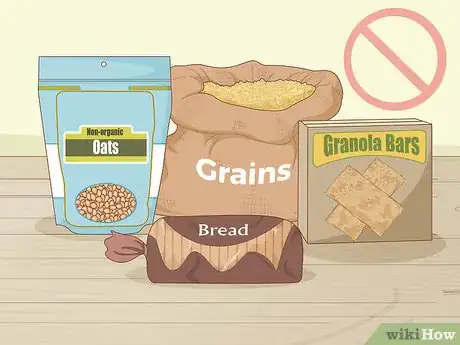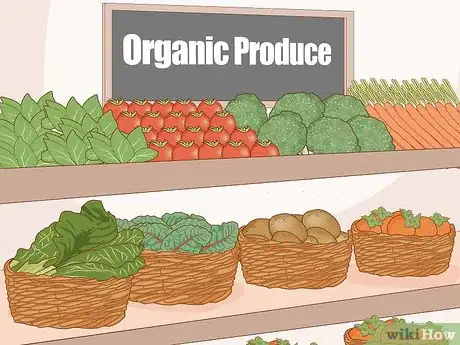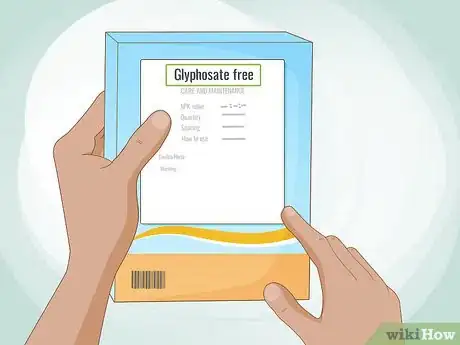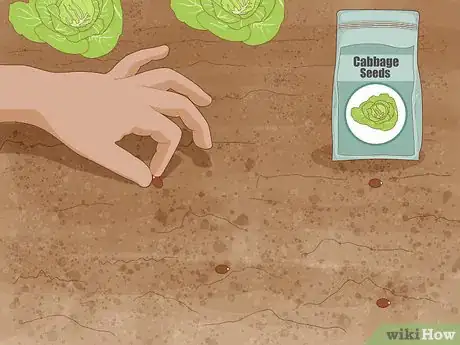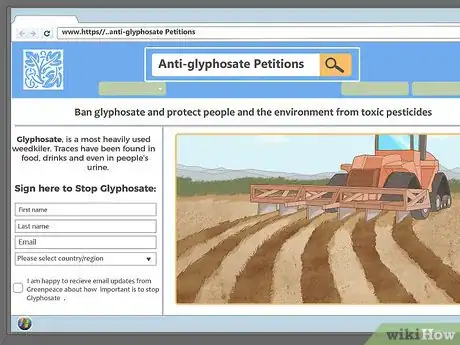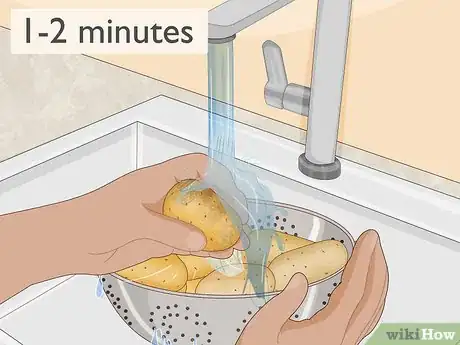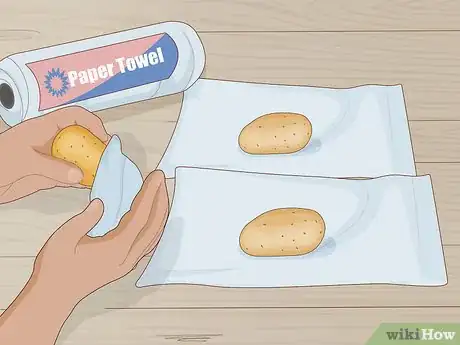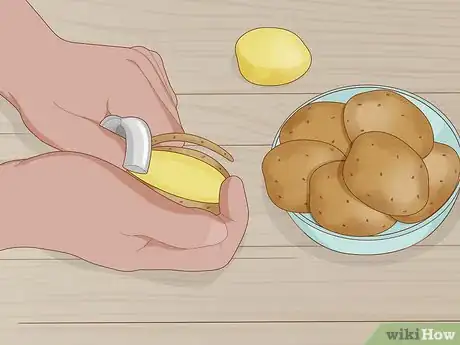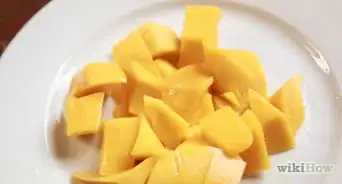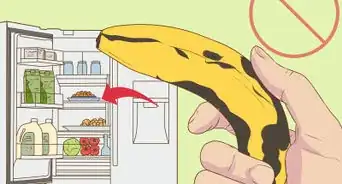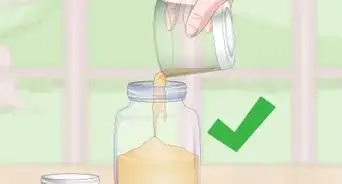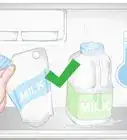This article was co-authored by wikiHow staff writer, Hunter Rising. Hunter Rising is a wikiHow Staff Writer based in Los Angeles. He has more than three years of experience writing for and working with wikiHow. Hunter holds a BFA in Entertainment Design from the University of Wisconsin - Stout and a Minor in English Writing.
There are 9 references cited in this article, which can be found at the bottom of the page.
wikiHow marks an article as reader-approved once it receives enough positive feedback. In this case, 94% of readers who voted found the article helpful, earning it our reader-approved status.
This article has been viewed 217,716 times.
Learn more...
Glyphosate is a widely-used chemical herbicide primarily used in the product Roundup, and it could have possible links to cancer with prolonged exposure.[1] While the overall risk is still not known entirely, you can take steps to eliminate glyphosate from your diet. Do your best to avoid foods that have high levels of glyphosate, such as oats or soy, and look for foods that are free from any herbicides. If you have fresh produce, you can wash and rinse some of the contamination off to reduce the amount you’re eating. With a bit of work, you can cut out a majority of the chemical from your regular diet!
Steps
Cutting Glyphosate from Your Diet
-
1Avoid having non-organic oats and grains. Many farmers spray their oats and simple grains, like barley or quinoa, with glyphosate so they dry out more and get a better harvest. Check the label or packaging to see if the grain you buy is from an organic source since they won’t have any chemical treatments on them. If you can’t tell if a product is organic or contains glyphosate, then check online to see if there is more information on it.[2]
- Glyphosate can be found in cereals, bread, oatmeal, and granola bars.
- Glyphosate isn’t listed in the ingredients section on processed foods, so your food may have trace amounts of glyphosate in it.
- The FDA and EPA have set maximum glyphosate levels for foods and produce so you aren’t exposed to dangerous levels.[3]
- You do not need to get rid of any foods in your pantry that already contain glyphosate since most concerns are over long-term exposure.
-
2Buy organic produce to avoid any herbicides or pesticides. Even though farmers use glyphosates on a variety of produce, organic foods don’t use any chemical treatments to protect against weeds or pests. Shop from the organic section at your local grocery store so you can find untreated produce to use in your meals. Store any organic fruits and vegetables away from other fresh produce you have since the chemical could cross-contaminate one another.[4]
- Some common produce that has glyphosate are soybeans, peas, carrots, sweet potatoes, and corn.
- There may be trace amounts of glyphosate in organic food due to wind-blown contamination.
- Organic foods tend to be more expensive than non-organic or processed foods.
Advertisement -
3Look for foods labeled “glyphosate-free” to avoid any contamination. Some foods may be certified as “glyphosate-free” after the product is tested for contaminants. Inspect the packaging of the food you want to buy to see if they have the term “glyphosate-free” printed anywhere. If you find the certification on the package, then the food is safe to eat without any contamination from the chemical. If not, there still may be trace amounts of glyphosate in the food.[5]
- You can also buy products labeled as “organic” or “non-GMO” since they won’t be treated with chemicals. There still may be trace amounts of glyphosate present if there was cross-contamination.
Tip: If you buy your produce from a farmer’s market, ask what types of pesticides or herbicides they use so you can determine if the produce has glyphosate in it.
-
4Try growing your own produce to ensure your produce is glyphosate-free. You can either grow the produce near a bright window in your kitchen or you can start an outdoor garden. Choose organic seeds or cuttings from organic produce you’ve already bought to start your produce garden. Take care of each of the plants so they can produce fruit and vegetables you can use without the risk of glyphosate contamination.[6]
- Some simple things you can grow at home easily are tomatoes, salad greens, and herbs.
-
5Support groups trying to ban glyphosate to prevent future contamination. Many advocacy groups are taking a stand against glyphosate and trying to ban it. Search online for anti-glyphosate petitions you can sign or foundations you can donate to so you can support them. Tell other people about glyphosate research and how it could affect them to get involved as well.[7]
- Do research on glyphosate thoroughly before telling others about it so you don’t spread misinformation to other people.
Cleaning Contaminated Produce
-
1Wash produce in a baking soda solution for an effective cleaning method. Combine 1 teaspoon (5 g) of baking soda with 2 cups (470 ml) of cold tap water and stir them together until it’s thoroughly mixed. Put the produce you want to wash in the solution and let it soak for up to 15 minutes. The baking soda in the solution will help lift and remove any glyphosate residue from the produce so it’s safer to eat.[8]
- Wash your fruits or vegetables even if they have an inedible outer layer, such as bananas or oranges. Glyphosate could stick to the outside and contaminate other items it comes into contact with.
- You can mix more of the solution if you need to. Always maintain a 1 teaspoon (5 g) to 2 c (470 ml) ratio so you don’t affect the flavor of the produce.
- You can also use a commercial produce-cleaning spray from your local grocery store if you want, though it may not be as effective as baking soda.
-
2Rinse the produce under tap water to clean off the baking soda solution. Set a colander in your sink and pour the produce into it. Run clean water from your sink over the produce for 1-2 minutes, shaking and moving the fruits and vegetables around so they’re rinsed evenly. When you’re finished, turn off your faucet and shake out any excess water so they aren’t wet.[9]
- Avoid soaking your produce to rinse it since the glyphosate residue may stay in the water and stick to your food.
Tip: Use a vegetable scrub brush on your produce to help scrape off any dirt or contaminants still stuck on the surface.
-
3Dry your produce with a paper towel to remove any stuck-on residue. Take the produce out of your colander and dry it individually on separate paper towels. Wipe the produce completely clean to remove any leftover residue that might still stick to the surface. Set the dry produce in a bowl or container to store it so it doesn’t get contaminated by other unwashed items.[10]
- Don’t use the same paper towel for different produce items since you may reapply the residue.
-
4Cut off the outer layer of produce if you want to get rid of absorbed contamination. Glyphosate residue can absorb into the produce through the rind or peel so it still may be contaminated even if you wash it. Use a peeler or a knife to cut off the outer skin on the fruits or vegetables and throw the peels away to avoid any contamination risks.[11]
Community Q&A
-
QuestionWhy isn't wheat listed as one of the high items? It is sprayed with huge amounts of Roundup right before harvest to force sprout it. Gluten intolerance may mostly be pesticide poisoning.
 Community AnswerYou have a very valid point. Unfortunately, before the EPA and FDA even take the steps to do a proper and unbiased study on this, they will take another paycheck from Monsanto with no remorse or regard for humanity.
Community AnswerYou have a very valid point. Unfortunately, before the EPA and FDA even take the steps to do a proper and unbiased study on this, they will take another paycheck from Monsanto with no remorse or regard for humanity. -
QuestionI eat brown rice. Is that also sprayed with huge amounts of Roundup right before harvest? Should I be eating white rice instead?
 Community AnswerIf it is not 100% organic, it most likely is. Wheat and grains have some of the highest contamination of all foods.
Community AnswerIf it is not 100% organic, it most likely is. Wheat and grains have some of the highest contamination of all foods. -
QuestionHow is it that glysophate begins the article as an herbicide and later becomes a pesticide?
 Community AnswerBefore glyphosate received a patent as a herbicide, it was patented as an antibiotic., Thus, it can kill pests (as well as bacteria). It kills the good bacteria in the soil and these bacteria are required to metabolize minerals for the plant.
Community AnswerBefore glyphosate received a patent as a herbicide, it was patented as an antibiotic., Thus, it can kill pests (as well as bacteria). It kills the good bacteria in the soil and these bacteria are required to metabolize minerals for the plant.
Warnings
- Glyphosate is still being tested by the EPA and FDA to determine its risk level or if contamination has adverse effects on humans. As of July 2019, there is no evidence or risk of harmful effects.[13]⧼thumbs_response⧽
Things You’ll Need
Cleaning Contaminated Produce
- Sink
- Bowl
- Baking soda
- Colander
- Paper towel
- Peeler or knife
- Scrub brush (optional)
References
- ↑ https://globalnews.ca/news/3379799/nearly-30-of-food-products-contain-residue-of-pesticide-glyphosate-cfia-report/
- ↑ https://www.ceh.org/glyphosate-herbicide-found-popular-cereals/
- ↑ https://www.epa.gov/ingredients-used-pesticide-products/glyphosate
- ↑ https://www.mnn.com/food/healthy-eating/blogs/glyphosate-food-consumer-information
- ↑ https://www.forbes.com/sites/kateharrison/2018/10/26/meet-the-next-must-have-clean-food-label/#43816d529a3f
- ↑ https://www.organicconsumers.org/news/tip-growing-organic-food-inside-your-home-year-round
- ↑ https://www.mnn.com/food/healthy-eating/blogs/glyphosate-food-consumer-information
- ↑ https://pubs.acs.org/doi/abs/10.1021/acs.jafc.7b03118
- ↑ https://well.blogs.nytimes.com/2015/08/17/ask-well-washing-off-the-pesticides/
About This Article
often spray glyphosate-based weed killers on their cereal crops, stick to grain products that are grown organically, without weed killers or pesticides. You can also avoid glyphosates by staying away from non-organic produce. In addition to eating organic, check your food labels for “glyphosate-free” certification. If you have the time and space, growing your own produce is another great way to reduce your exposure. To keep future exposures to a minimum, support advocacy groups that are working to ban glyphosate. For more tips, including how to clean produce that may have been contaminated by glyphosate, keep reading!
